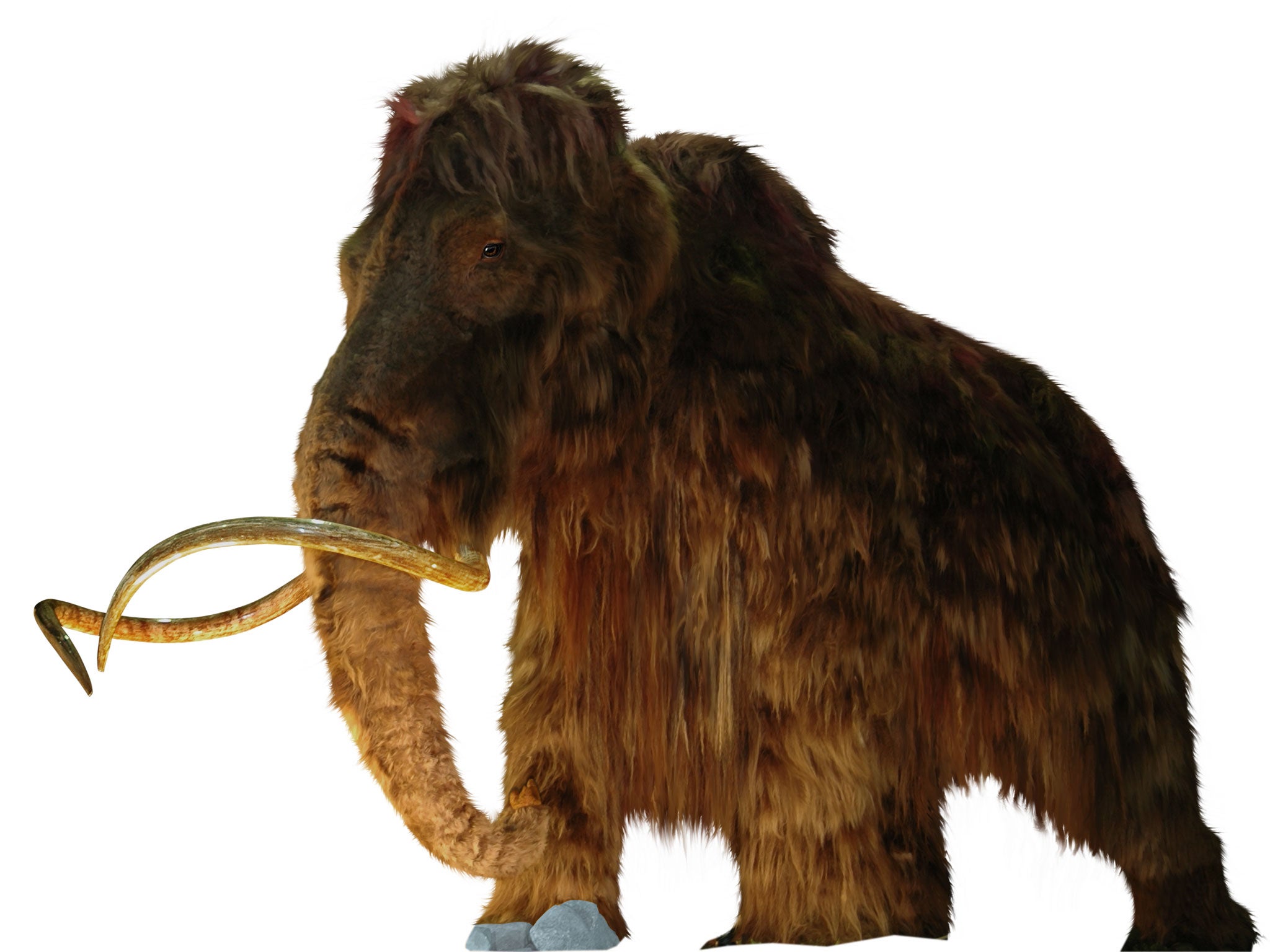Woolly mammoths became extinct because of climate change – not hunting
DNA research reveals dynamic populations of the giant animals, showing numbers plummeted at the end of the last ice age

Your support helps us to tell the story
From reproductive rights to climate change to Big Tech, The Independent is on the ground when the story is developing. Whether it's investigating the financials of Elon Musk's pro-Trump PAC or producing our latest documentary, 'The A Word', which shines a light on the American women fighting for reproductive rights, we know how important it is to parse out the facts from the messaging.
At such a critical moment in US history, we need reporters on the ground. Your donation allows us to keep sending journalists to speak to both sides of the story.
The Independent is trusted by Americans across the entire political spectrum. And unlike many other quality news outlets, we choose not to lock Americans out of our reporting and analysis with paywalls. We believe quality journalism should be available to everyone, paid for by those who can afford it.
Your support makes all the difference.DNA research on frozen woolly mammoths has found evidence which suggests climate change had a far more significant impact on the animals’ extinction than previously thought.
Mammoths are among the best-researched of the former inhabitants of our planet, and their abundance in fossil records and high-quality samples had previously suggested the existence of a large and stable population up until the point they clashed with human hunters.
Research published by the Royal Society today, however, shows that was not the case, with mammoth numbers waxing and waning massively between favourable ice ages – known as glacial – and tougher warm periods – known as interglacial.
During the world’s colder periods, millions of mammoths spread out across frosty tundra in mainland Europe, Siberia, and North America. Yet according to the report the last interglacial, around 120,000 years ago, was characterised by a climate “at least as warm as today”, and with sea levels “as high as, or even higher than that at present”.
By analysing the variation in DNA from different regions, scientists can show that populations scattered into isolated, northern strongholds, and numbers plummeted to the tens of thousands.
While they were then able to recover and repopulate wider areas during the last ice age, the cycle repeated itself some 14,000 years ago when the world warmed again.
The report said: “It thus seems likely that environmental changes played a significant role in shaping the woolly mammoth's demographic history, with warm periods restricting the amount of available habitat and cold periods leading to population expansions.”
Scientists leading the research from the Swedish Museum of Natural History stressed that the extinction of an animal was usually down to a combination of factors, and that while the new study reveals unprecedented details about how mammoth numbers got to perilously low levels, it does not show why they died out altogether.
It has previously been suggested that humans, hunting the animals for food, furs and tusks, delivered the final blow in wiping mammoths out. But there has been no scientific data collected to back this theory.
Lead researcher Dr Love Dalen told the BBC: “The picture that seems to be emerging is that they were a fairly dynamic species that went through local extinctions, expansions and migrations. It is quite exciting that so much was going on.”
The report concludes that: “Resolving why the woolly mammoth survived in refugia during earlier interglacials, but not during the Holocene (the current warm period), may thus provide the key to understand the mechanism behind its final extinction.
Dr Dalen and his team were based in London for the research, and used 300 woolly mammoth specimens collected from across the globe.
Join our commenting forum
Join thought-provoking conversations, follow other Independent readers and see their replies
Comments